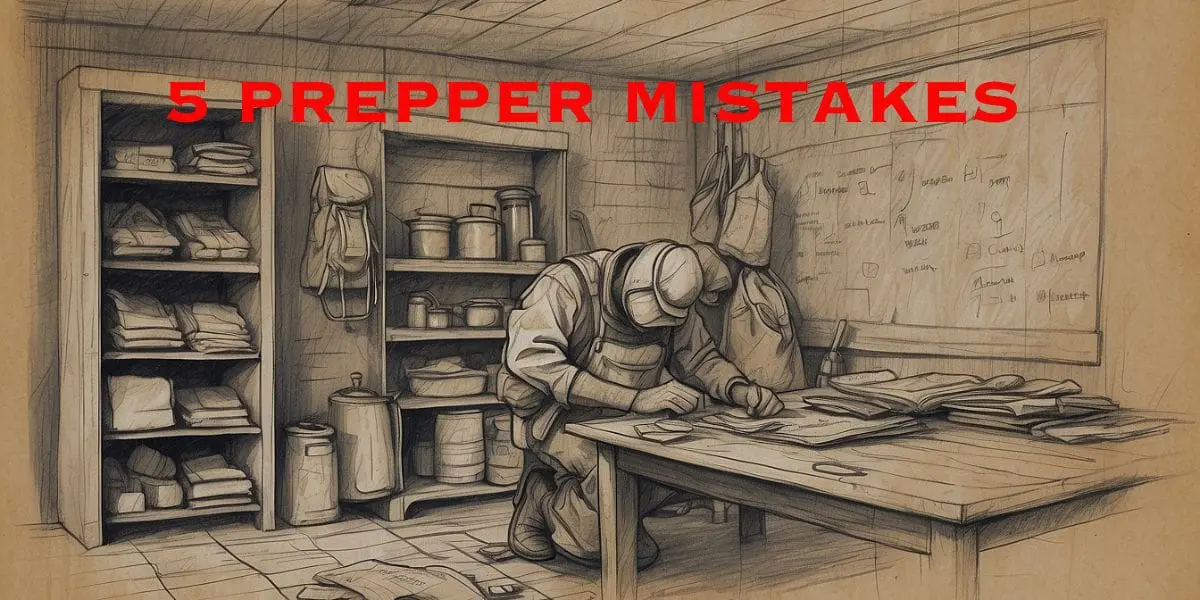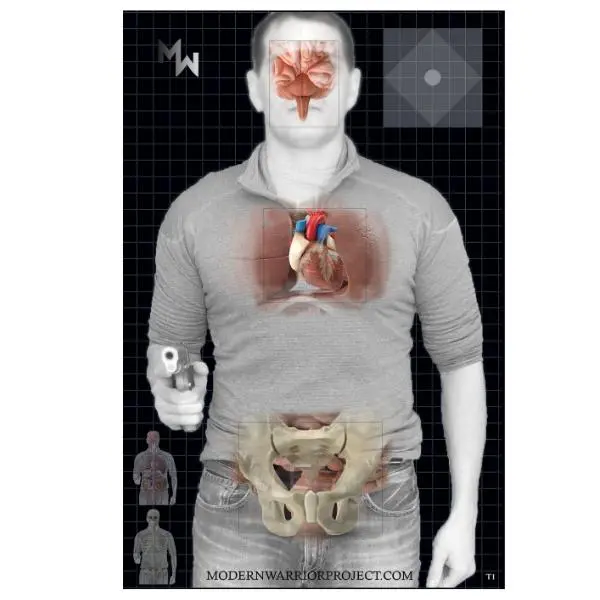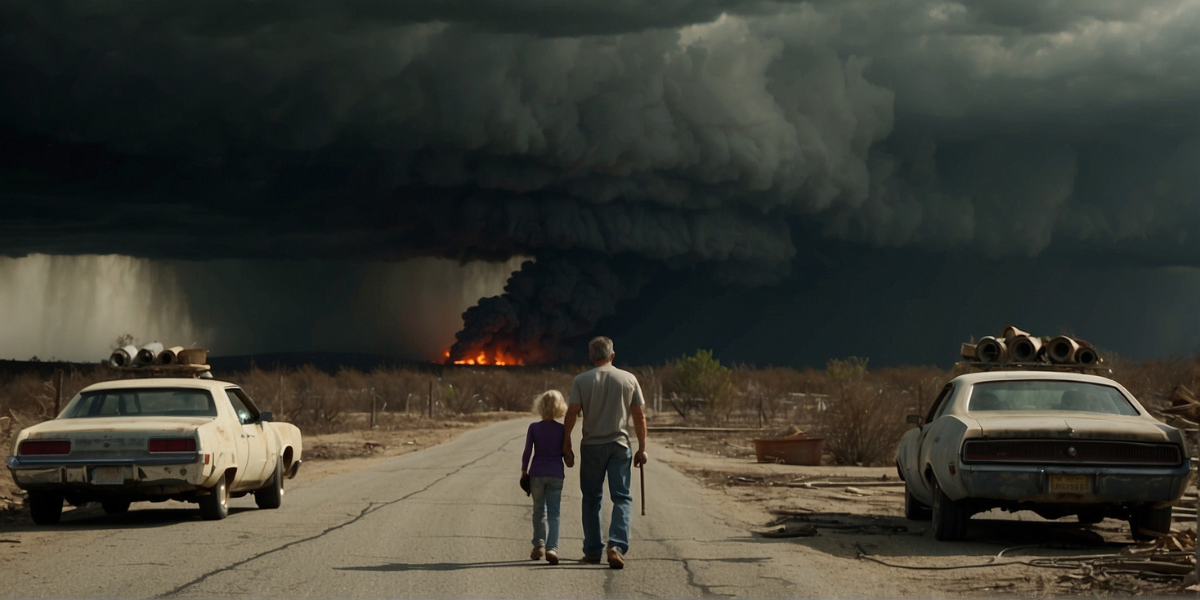Introduction To Prepping Errors
Prepping isn’t just for doomsday enthusiasts. It’s about being ready for the unexpected, from natural disasters to economic upheavals. Being a prepper means having the foresight to stockpile essential resources and develop skills that can help you navigate crises.
Here are 5 crucial prepping mistakes to avoid:
- Not getting started
- Ineffective preparations
- Insufficient supplies
- Lack of planning
- Neglecting the value of experience and training
Understanding these common pitfalls can make the difference between survival and chaos when disaster strikes. To ensure you’re on the right track, consider seeking guidance from organizations like us the Modern Warrior Project and others, which provide valuable insights and resources for preppers. Get ready to challenge your current approach and ensure you’re not falling into these all-too-common traps.
15 in 1: Your Complete Guide to Surviving Any Crisis with Expert Strategies for Prepping, Gear, First Aid, Food Storage, Water Filtration, Self Defense &...
Prepping Mistake 1: Not Getting Started
One of the biggest mistakes people make when it comes to prepping is simply not getting started. There are several reasons why this happens, but it’s important to understand that taking action early on can make all the difference in an emergency situation.

Why People Fail to Start Really Prepping
Many people fail to start prepping because they either don’t think it’s necessary or they believe it’s too complicated. They may have a mindset of “it won’t happen to me” which provides a false sense of security. However, when a crisis does occur, these individuals are often caught off guard and unprepared.
A Proactive Prepping Approach
Instead of waiting for something bad to happen, it’s important to take a proactive approach and start prepping now. This means adopting a mindset of preparedness and actively taking steps to ensure your safety and well-being.
Practical Steps for Getting Started as a Prepper
If you’re unsure where to begin with prepping, here are some practical steps you can take:
- Set Clear Goals: Determine what specific scenarios or events you want to prepare for. This will help guide your actions and prioritize your efforts.
- Create a Basic Emergency Kit: Start by putting together a basic emergency kit that includes essential items such as water, non-perishable food, and first-aid supplies. It’s also helpful to have tools like a flashlight, multi-tool, and matches or lighter on hand.
- Educate Yourself: Take the time to learn basic survival skills like fire-making and first aid. There are plenty of resources available online and in books that can teach you these skills.
- Build Gradually: Prepping doesn’t have to be an all-or-nothing approach. You can start small and gradually build up your supplies over time. For example, try adding one extra can of beans to your grocery shopping list each week.
By taking these practical steps, you’ll be well on your way to becoming more prepared for any potential emergencies that may arise. Remember, even small actions can have a big impact in the long run. So don’t wait, start prepping today!
First Aid Kit IFAK EMT Molle Pouch Survival Kit Outdoor Gear Emergency Kits Trauma Bag for Camping Boat Hunting Hiking Home Car Earthquake and Adventures
If you’re unsure where to begin with prepping, there are practical steps you can take to get started. Set clear goals to determine what scenarios or events you want to prepare for. Create a basic emergency kit that includes essential items like water, food, and first-aid supplies. Educate yourself on basic survival skills through online resources and books. Remember that prepping doesn’t have to be overwhelming; you can start small and gradually build up your supplies over time. By taking these practical steps, you’ll be well on your way to becoming more prepared for any potential emergencies that may arise. So don’t wait, start prepping today!

Prepping Mistake 2: Ineffective Preparations
Preparing for emergencies involves more than just gathering random items and stashing them away. The effectiveness of your survival kit depends on two key factors: having the right supplies and making sure they’re in good condition.
Emergency Supplies: More Than Just Food and Water
While it’s important to have enough food and water to sustain yourself during an emergency, there are other essential items you should include in your survival kit:
- First Aid Kit: A well-stocked first aid kit can be a lifesaver. Make sure it contains bandages, antiseptics, pain relievers, and any prescription medications you need.
- Tools and Equipment: Having versatile tools like multi-tools, flashlights with extra batteries, waterproof matches, and a reliable knife can make a huge difference in challenging situations.
- Clothing and Shelter: Don’t forget to pack suitable clothing for different weather conditions, along with blankets and a sturdy tent or tarp for shelter.
Securing Important Documents
In times of crisis, misplacing or losing important documents can add even more stress. To avoid this, create copies of the following documents and store them in a secure place:
- Identification cards (such as driver’s licenses and passports)
- Property deeds or rental agreements
- Insurance policies (homeowners, renters, health)
- Medical records (including prescriptions)
It’s also a good idea to keep these copies in a waterproof container for extra protection.
Quality Over Quantity
Having a large quantity of supplies won’t be helpful if they’re past their expiration date or no longer functional. Here are some tips to ensure the quality of your emergency provisions:
- Regularly inspect your supplies to check for any signs of damage or expiration dates approaching.
- Rotate your food and medication stocks by consuming and replacing them before they expire.
- Test your tools periodically to make sure they’re still working properly.
Remember, ineffective preparations can be more dangerous than not preparing at all. By having the right emergency supplies and keeping them in good condition, you’ll be better equipped to handle any unforeseen circumstances that may arise.
Gardeners Basics, Over 16,000 Seeds Non-GMO and Heirloom, Great for Emergency Bugout Survival Gear 35 Varieties Seeds for Planting Vegetables 35 Plant Markers
Prepping Mistake 3: Insufficient Supplies
Stocking up on emergency food and water reserves is not just a good idea, it’s essential. When a crisis hits, you don’t want to be the person scavenging for scraps.
Calculating your needs is straightforward: focus on the basics. The average person requires about one gallon of water per day and around 2,000 calories worth of food. Multiply this by the number of people in your household and the number of days you plan to be self-sufficient.
Tips for building an affordable yet well-rounded stockpile:
- Start small: Begin with a three-day supply and gradually build up to two weeks, then a month.
- Budget prioritization: Allocate funds specifically for emergency provisions. Skipping that daily latte can add up quickly.
- Diversify your stockpile: Include canned goods, freeze-dried foods, grains, and legumes. Variety ensures balanced nutrition.
- Rotate supplies: Keep track of expiration dates and use older items first. This prevents waste and ensures fresh supplies.
- Water storage: Invest in high-quality water containers or purification systems. In many crises, water becomes scarcer than food.
Ignoring these steps is like playing Russian roulette with your survival.

Prepping Mistake 4: Lack of Planning
Imagine having all the gear and supplies but no clue how to use them when disaster strikes. A written plan is the unsung hero of effective prepping. This isn’t just about jotting down a few notes; it’s about crafting a comprehensive strategy that covers all possible scenarios.
Key elements of an emergency plan:
1. Communication Strategies:
Establish multiple ways to communicate with family members. Think beyond cell phones—walkie-talkies, CB radios, even pre-arranged signals can be lifesavers.
2. Evacuation Routes:
Know your exits. Identify primary and secondary routes for getting out of dodge, and make sure everyone knows them by heart.
Including your family in the planning process isn’t optional; it’s critical. Prepping isn’t a solo act—it’s a family affair. Involving everyone ensures they’re not just aware but prepared and confident in executing the plan.
Why involve family members?
- Shared Responsibility: Everyone has a role, from the youngest to the oldest. This creates a sense of shared duty and preparedness.
- Unified Response: When everyone knows their part, chaos is minimized, and responses are swift and coordinated.
Creating a robust emergency plan doesn’t just keep you prepared—it keeps you alive. Make it a living document, revisited and revised as circumstances change. Think of it as your family’s ultimate playbook for survival.
Prepping Mistake 5: Neglecting the Value of Experience and Training
Having all the gear in the world won’t save you if you don’t know how to use it. Stockpiling supplies is only half the battle; training and gaining practical experience are crucial. Think about it: would you trust a surgeon who had read every textbook but never held a scalpel? Your prepping plan should be no different.
Key Areas for Training and Experience
1. Rehearsal Drills
- Regularly practice your emergency plans.
- Conduct family drills for evacuation routes and communication strategies.
- Evaluate and tweak your plans based on these rehearsals.
2. Gear Proficiency
- Get hands-on with your equipment. Know how to use, repair, and maintain each item.
- Schedule regular checks to ensure everything is in working order.
- Familiarize yourself with multi-use tools; versatility is key in a crisis.
3. Survival Skills
- Basic first aid: Learn how to treat wounds, perform CPR, and manage common medical emergencies.
- Navigation: Master techniques like using a compass and understanding magnetic declination.
- Self-defense: Understand fundamental self-defense tactics for various threat levels.
Real-World Application
Practicing these skills not only boosts your confidence but also reveals gaps in your preparations. Sun Tzu’s Five Heads emphasize adaptability and discipline—traits honed through experience, not just theory. Don’t just prepare to survive; prepare to thrive under pressure.
Conclusion
Learning from these prepping mistakes isn’t just about stockpiling gear and supplies. It’s about cultivating a mindset of vigilance and adaptability. Prepping is a continuous journey, not a one-time task.
Stay vigilant: Regularly reassess your plans and supplies. Ask yourself, “What did I miss? Where can I improve?”
Engage with the community: Share your experiences, successes, and failures in the comments below. Your insights could help someone avoid their own prepping errors.
Remember, preparation is more than just survival—it’s about thriving in adversity.
































